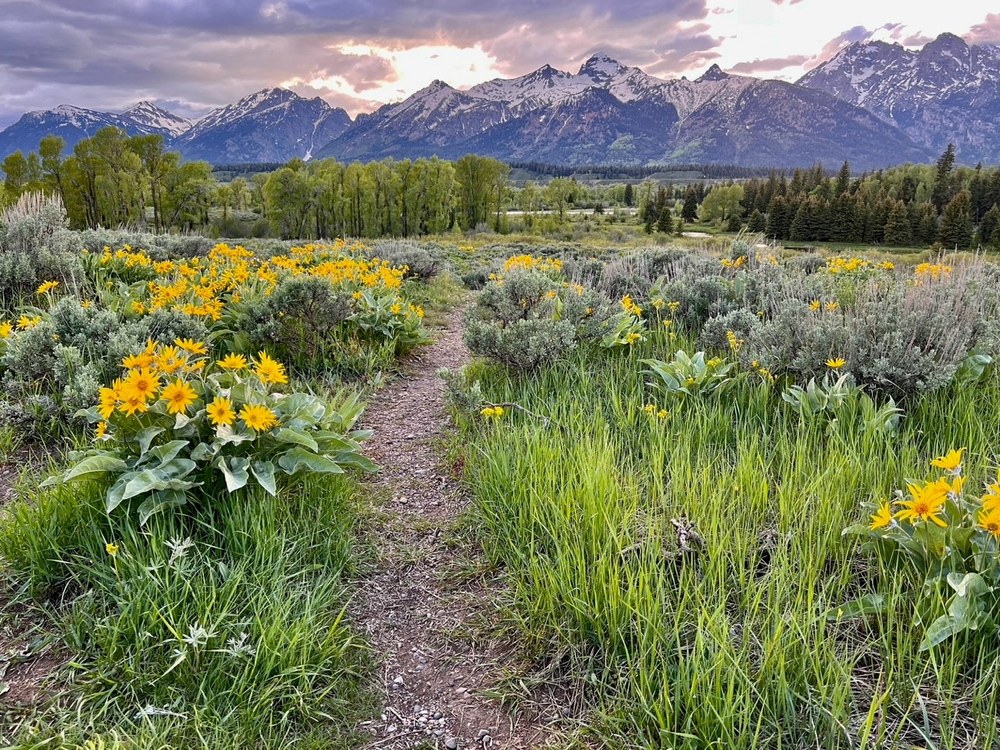
Traveling to Grand Teton National Park in June of 2023 was a deeper and more meaningful experience than the first time I was there in 2010. What made the trip so enriching for me was the similarities of the flora that are found in both the Pacific Northwest and Wyoming. The forests and meadows were full of trees and flowers that were familiar and felt like “home.” I saw Ponderosa Pine, Douglas Fir, Arnica, Paintbrush, and Shooting Star.
When I visited The Tetons in 2010, I was still living in Indiana. I was familiar with the flora and fauna found there. In Indiana, deciduous trees rule the forests. There are far fewer evergreen plants (such as Salal and Oregon Grape), and because there is little change in elevation, one does not see the variety of flora along a trail that we see in Washington, such as Mount Townsend.
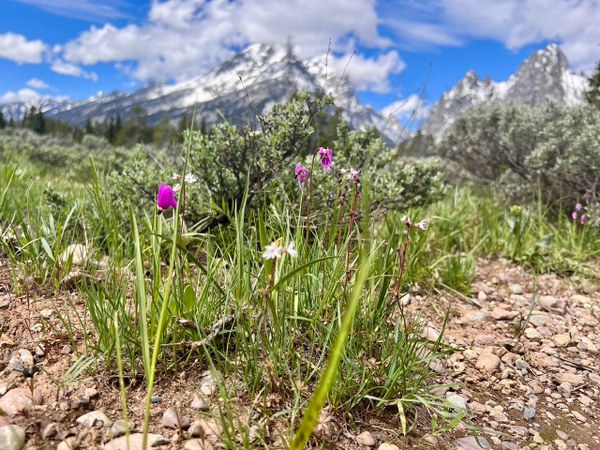 Looking west toward the Tetons from one of many wildflower meadows.
Looking west toward the Tetons from one of many wildflower meadows.
My second visit to the Tetons was in 2023. By this time I had been living in Washington for seven years. While in Washington, I’d been able to take a few naturalist courses and hikes offered through The Mountaineers Naturalists program. The courses and hikes focused on studying and observing the life around us in the Pacific Northwest.
The first night in Wyoming, my husband and I took a walk around the area where we were staying, ideally located between Jackson Hole and Grand Teton National Park. I was struck by how many plants I recognized: serviceberry, balsam root, and lupine, to name a few.
I had expected this world of the Tetons to be much different than what I saw in the Pacific Northwest. I was pleasantly surprised that there were so many similarities! The knowledge I had gained through the Naturalist courses and hikes served me well as I explored the Tetons with my family. I kept track of the plant life I saw over the course of four or five days, using an app called Wyoming Wildflowers. This app was developed by the organization who published an app for Washington, called Washington Wildflower Search.
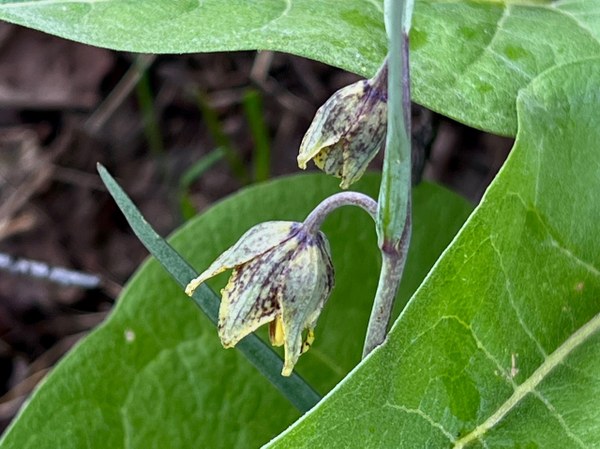 Spotted Mountain Bells (Fritillary atropurpurea).
Spotted Mountain Bells (Fritillary atropurpurea).
The app helped me identify and log some of the flora I was seeing. I was pleasantly surprised that of fifty-three plants I had logged, I already knew about thirty of them - or at least their family. Several plants looked similar, with only slight differences. I kept seeing Oregon Grape near the trails, but it was low to the ground and not bushy. Using my app, I discovered that it was a variety I hadn’t seen in Washington, called Creeping Oregon Grape. In addition to the Oregon Grape, I also saw a lot of Balsamroot, Pipsissewa, Springbeauty, Larkspur, and Monkey-flower. Although the Oregon Grape looked slightly different, I didn’t notice any differences among the other flowers.
I found another favorite; what I thought was Chocolate Lily (Fritillary affinis) was actually Spotted Mountain Bells (Fritillary atropurpurea). To my untrained eye, I couldn’t tell the difference between the two. Further research revealed that the Chocolate Lily in our area grows in grasslands or with Oak or Pine at low elevations, while the Spotted Mountain Bells in the Tetons thrive in leaf mold under trees between 3,000-9,000 feet.
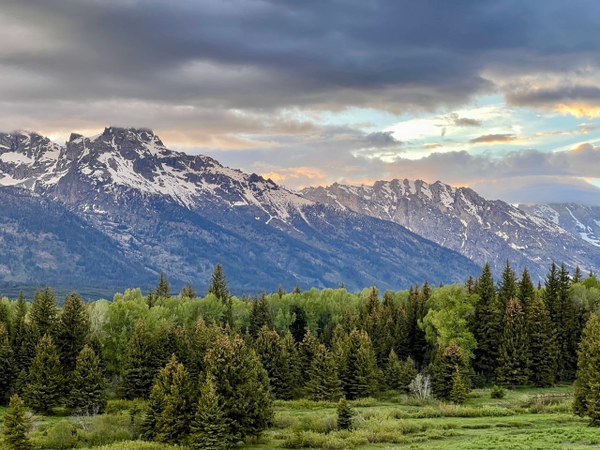 Sunset from the Blacktail Ponds Overlook.
Sunset from the Blacktail Ponds Overlook.
I recommend traveling to Grand Teton National Park for the lovely flowers and plants that you’ll find along the way. In addition, the beautiful mountains, lakes and rivers should not be missed. My favorite places and memoires were: sunsets from the Blacktail Ponds Overlook, the beaver dams and waterfowl at Schwabacher Landing, the bison herd at Elk Ranch Flats Turnout, the hike to Taggart Lake, and a float trip that we took on the Snake River through the park.
It was exciting to explore the Tetons and find so much that was familiar. Seeing familiar flora in areas similar to where I might see them in the Pacific Northwest made me even more aware of the kind of habitat I was in, whether it was forest, meadow, or riparian.
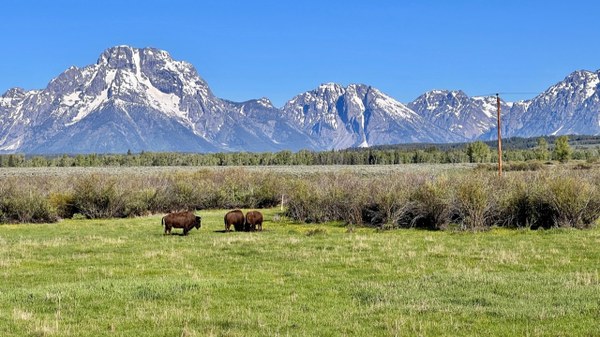 Bison near Elk Ranch Flats.
Bison near Elk Ranch Flats.
I always knew my studies through the Naturalist Course had made life richer; what I hadn’t expected was that those studies would make my exploration of the Tetons more meaningful as well.
Add a comment
Log in to add comments.What a great write up Becky!! I certainly enjoyed reading your account and your perspective. Hike on! Carla
 Becky Andrade
Becky Andrade